The Business Model of Physical Product Startups
Bringing a new product to market is difficult, requiring extensive work in product development, manufacturing and marketing efforts. For newcomers to the space, startups, and even established companies it is easy to overlook some of the hidden costs associated with hardware. Those misses are important since pricing things correctly at market is crucial to the long-term success. Changing prices, at least upward, once a product is launched is difficult and often the sign of issues. It is therefore important to understand the margins associated with developing, producing, and bringing to market these new products.
Hardware as a service:
This model is popular especially in the newly found connected hardware or IOT (internet of things) space. Typically it consists of a piece of hardware along with a subscription service on the back end. The recurring revenues from the subscription means that a company can lower the initial cost of selling the hardware, and sometimes even give it away.
 Offers a completely free phone dongle that allows a user to swipe credit cards. The reader is free while square makes money off of each payment transaction. Since most processors are small business or those doing some form of point of sale (think food trucks, vendors at trade shows, and even retail establishments) there are often thousands of dollars of payments sent through each reader.
Offers a completely free phone dongle that allows a user to swipe credit cards. The reader is free while square makes money off of each payment transaction. Since most processors are small business or those doing some form of point of sale (think food trucks, vendors at trade shows, and even retail establishments) there are often thousands of dollars of payments sent through each reader.
 Particle is a wifi enabled development board designed to make building connected devices easier. By managing the hardware end of things and releasing a development kit the company allows others to build unique ideas on top of their platform and then collect a licensing fee for using the software components.
Particle is a wifi enabled development board designed to make building connected devices easier. By managing the hardware end of things and releasing a development kit the company allows others to build unique ideas on top of their platform and then collect a licensing fee for using the software components.
![]() The widely covered new high end 3D printer is taking a leasing model approach to their new system. Rather than selling the machines outright, with a service and maintenance contract on the back end.
The widely covered new high end 3D printer is taking a leasing model approach to their new system. Rather than selling the machines outright, with a service and maintenance contract on the back end.
Enabled Services
This type of product is similar to some of the above noted subscription services but differs in that there is a functional product even without paying the subscription.
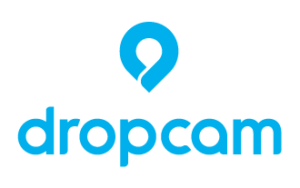 Now a part of Nest, the Dropcam works as a connected camera that can stream to an app. It also offers a handful of add-ons, such as motion capture, that can store segments of video to a cloud on command. Essentially this turns the Dropcam into a security camera. The enabled service is cloud hosting for storage of the videos.
Now a part of Nest, the Dropcam works as a connected camera that can stream to an app. It also offers a handful of add-ons, such as motion capture, that can store segments of video to a cloud on command. Essentially this turns the Dropcam into a security camera. The enabled service is cloud hosting for storage of the videos.
Consumables:
This is commonly referred to as the “razor and razorblade” model where there is an initial purchase and then follow on purchases that are used up. Consumables can be a great business model especially when the initial purchase is very sticky and builds into a workflow. Typically there is some balance between the gross margins on the initial purchase and the consumables where the consumables will deliver a higher overall margin. This is due to the fact that there are switching costs for a consumer, as is the case for razor blades, which are notoriously expensive and only work with a given handle. Of course these consumables come with some highly unique and complex challenges. If a customer is unable to get more of the consumables when they need them the level of frustration experienced is exacerbated by staring at an (often costly) paperweight. To combat this potential hazard most consumables require significant upfront investment in inventory and distribution planning. For example, in the case of retail sales a retailer may require a complete “set” of goods to show to fill a shelf. Even if forecasts say that the typical user will only go through 1 consumable a month it may be necessary to stock 6 months or a years worth of consumables just to hit an initial set. Of course if sales do not meet expectations this leaves a significant amount of risk in the form of unsold inventory, a problem which can sink a company quickly because cash flow is so important to production.
![]() The beauty of the ecosystem is evident in Gillete’s model. Great marketing helps hook a customer into a long period of follow on purchases, just ask any American male who was sent a razor in the mail on or around their 18th birthday. Margins on the razors are huge, not because of a high cost of goods but because of the large upfront investment in acquiring a customer and the promotional dollars required to keep them from switching.
The beauty of the ecosystem is evident in Gillete’s model. Great marketing helps hook a customer into a long period of follow on purchases, just ask any American male who was sent a razor in the mail on or around their 18th birthday. Margins on the razors are huge, not because of a high cost of goods but because of the large upfront investment in acquiring a customer and the promotional dollars required to keep them from switching.
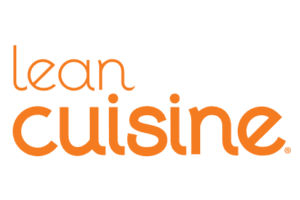 Most devices that pair to food products follow the consumable method. Each additional purchase is for a truly consumable (edible) product. There is no Lean Cuisine microwave but to some extent the TV dinner crazy and entire frozen food section of a grocery store follows this model. In the toy world the easy bake oven actually does pickup both pieces. From experience, a kids toy does not drive nearly as many consumable sales as a microwave.
Most devices that pair to food products follow the consumable method. Each additional purchase is for a truly consumable (edible) product. There is no Lean Cuisine microwave but to some extent the TV dinner crazy and entire frozen food section of a grocery store follows this model. In the toy world the easy bake oven actually does pickup both pieces. From experience, a kids toy does not drive nearly as many consumable sales as a microwave.
Branded Products:
Either as a stand alone product or part of a much larger product line that can span a number of categories. For mega brands this model can also be peeled off into a licensing, where a third party manufacturer picks up the sales and margins from selling the physical goods while remitting some of their revenue to the parent.
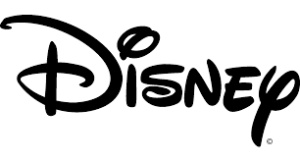 Disney has a mountain of great entertainment properties in the vault. Everything from the classics of Cinderella to the new Marvels of Pixar and recent addition of everything Star Wars. Many product categories benefit from a true design sense that is built on the characters, things like princess dresses and dolls are highly unique. Where the brand does a great job though is through other categories in which label-slapping can really add value. Just think of a simple phone case with a printed Star Wars logo that can suddenly fetch more money than a basic case.
Disney has a mountain of great entertainment properties in the vault. Everything from the classics of Cinderella to the new Marvels of Pixar and recent addition of everything Star Wars. Many product categories benefit from a true design sense that is built on the characters, things like princess dresses and dolls are highly unique. Where the brand does a great job though is through other categories in which label-slapping can really add value. Just think of a simple phone case with a printed Star Wars logo that can suddenly fetch more money than a basic case.
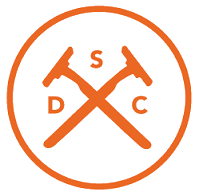 Dollar Shave Club does a very nice job of combining the consumable model with a subscription model. On top of that they have added a number of other products under their own brand name to help increase the dollars spent on each purchase. It is a strong model since the almost entirely own the customer interaction (there is no distributor or retailer to go through) and thus are much more efficiently capturing the value add in an upsell.
Dollar Shave Club does a very nice job of combining the consumable model with a subscription model. On top of that they have added a number of other products under their own brand name to help increase the dollars spent on each purchase. It is a strong model since the almost entirely own the customer interaction (there is no distributor or retailer to go through) and thus are much more efficiently capturing the value add in an upsell.
Subscription Boxes:
Subscription goods is a variation of branded products. There was a huge rise in subscription box services a few years ago, which has subsided as the market became saturated and the difficulty in achieving scale meant that there was room for a limited number of players. Much of this business model hinges on the ability to achieve sustainable distribution. Companies in this space can build a competitive edge through great negotiations of shipping costs as well as packaging. After achieving scale things get a lot easier as volume discount on the goods in the “box” can drive costs down and it is also typically easier to negotiate great shipping and fulfillment fees if the volume is sufficiently high enough. These types of subscriptions can also be supplemented, or fully supporter, by delivering up sells via a separate store or by monetizing what goes into the box by selling their subscriber network as a captured audience. Done correctly the item that lands in the box can be valuable to the customer, while also being seen as a marketing expense to the supplier, leaving the box supplier in the middle to reap the benefits of the subscription fee.
 Lootcrate focus on a niche product aesthetic but spans categories. They also are a bit of a branded product but in the end effectively just curate items in the geek/pop-culture genre. A back-end store that is also curates allows them to expand sales but by not pushing for branded in subscription products they miss out on the opportunity to control product quality.
Lootcrate focus on a niche product aesthetic but spans categories. They also are a bit of a branded product but in the end effectively just curate items in the geek/pop-culture genre. A back-end store that is also curates allows them to expand sales but by not pushing for branded in subscription products they miss out on the opportunity to control product quality.
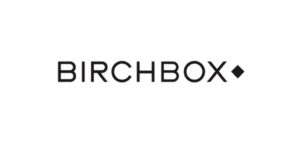 Birchbox is part sample giveaway and part product testing Birchbox lowers there costs by positioning partnership with them as a promotion. For the suppliers making items for the box the need to generate the same margins as other channels is not as critical. Instead most items can be sold to Birchbox at cost since they are sampler sizes intended to drive to follow on purchases.
Birchbox is part sample giveaway and part product testing Birchbox lowers there costs by positioning partnership with them as a promotion. For the suppliers making items for the box the need to generate the same margins as other channels is not as critical. Instead most items can be sold to Birchbox at cost since they are sampler sizes intended to drive to follow on purchases.
Other Resources:
The Bolt Blog, by the hardware focused VC firm, has a great article on the business models of connected devices.
Making Society looks at how you can build a business model around something open source, be it physical or digital there is an opportunity to bridge both worlds.
Slideshare article on hardware trends. This is a slightly outdated deck but still relevant in a number of areas.
